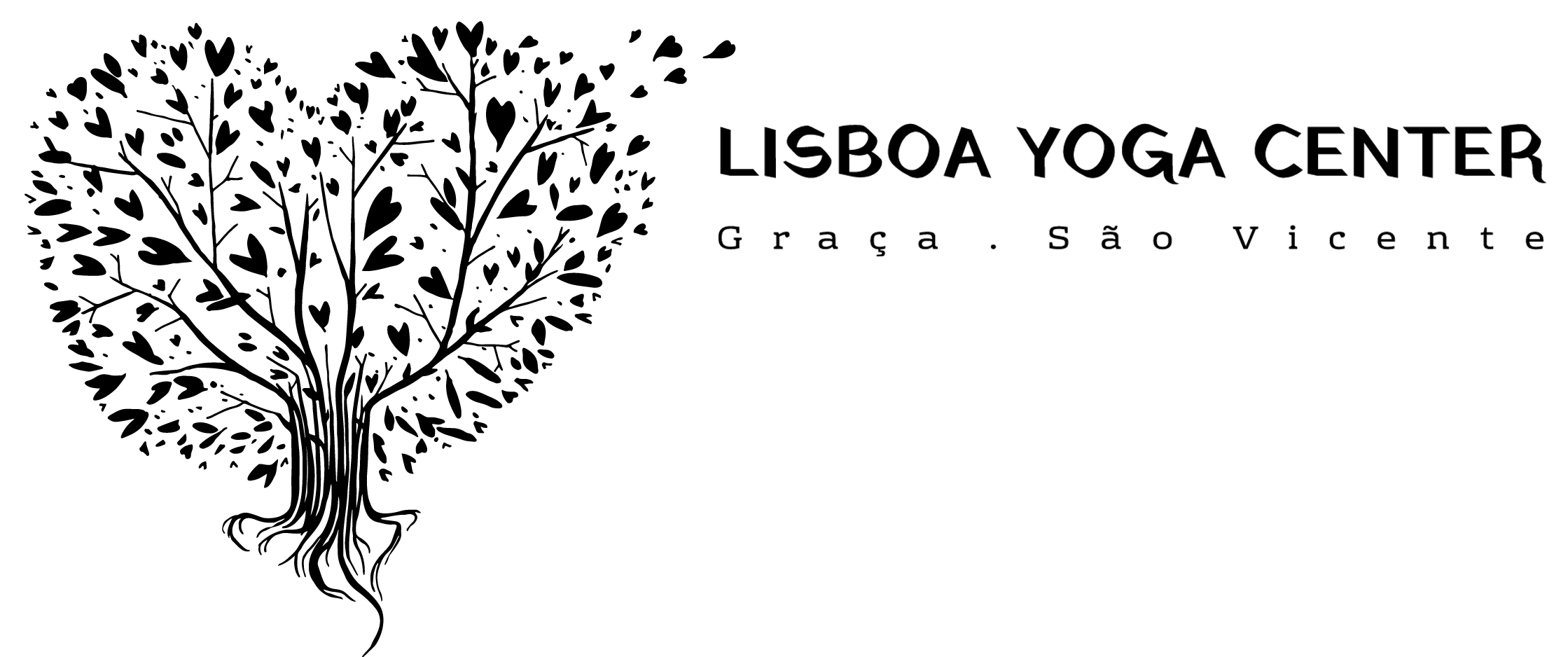“Yoga is for all. I designed props so that all can benefit from it” BKS Iyengar
“In 1937, when I was in Pune, the then principal of Fergusson College came to me with some sought relief. He was around 85 years old and I was 19. I wanted to make him to do standing poses, but his age compounded with problems deterred him from ever standing correctly. If then occurred to me that I could make him do Trikonasana and Parshvakonsasana lying down. His legs however did not stay apart. So, I hept a long wooden rod between his feet to stop hislegs from coming closer. That was my first creation of a prop – a Wooden Rod”. *
Master IYENGAR invented props to use on the practice such as belts, bricks, chairs, ropes, blosters, blankets with the aim not only to help students learn postures in a correct way avoiding the risk of injury or tension, but also to intensify the work of an asana. The materials can also be used to support the body, to give a sense of orientation, perception and deep knowledge of a posture. This way the student can also assimilate and integrate the asana benefits in a more conscious way.Here we present some of them.
Bricks
Nowadays bricks are na integral part of standing poses, but they were first used for the inverted posture over the head (Shirshanana), to reduce pain in the neck and heaviness in the head. Master Iyengar started by using one brick horizontally and one vertically. The vertical is used to support the back against the wall and the horizontal supports the shoulder blades, proving to be quite effective.
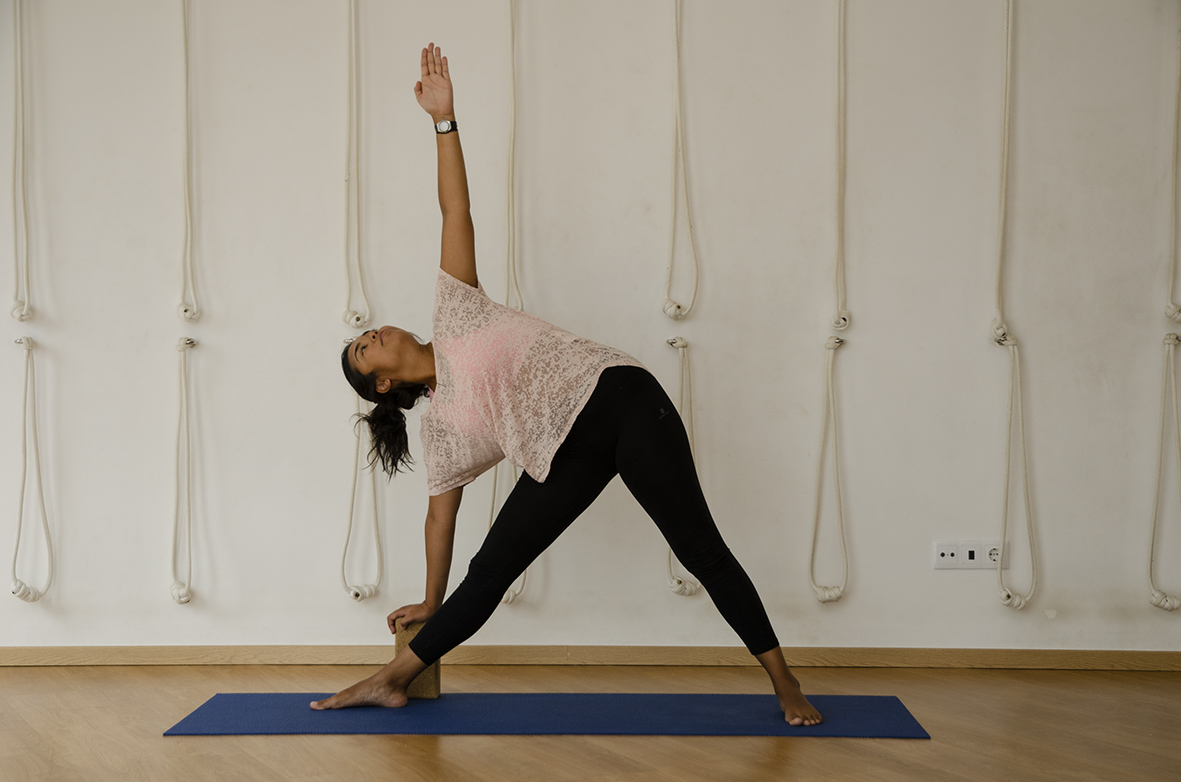

Belt
One day, in 1960, when the Master was in France he saw people using belts to carry and tie their luggage and he thought if the bags were tied so firmly, then it could also be used to tie the legs. With that squeeze, the Master could feel them in a confined space. This is action with resistance. Master Iyengar then began to manufacture this kid of belt in Pune.
Chair
The chair was initially created to make Viparita Dandasana as it supports and creates a sense of security and stability.
Later the Master also started to use it to do the inverted shoulder posture (Sarvangasana) and the bolster to support the shoulders, which helped in achieving neck flexion. The chair supports the lumbar area and stop that area from sagging down and with this support the shoulders rotate back actively, opening the chest.
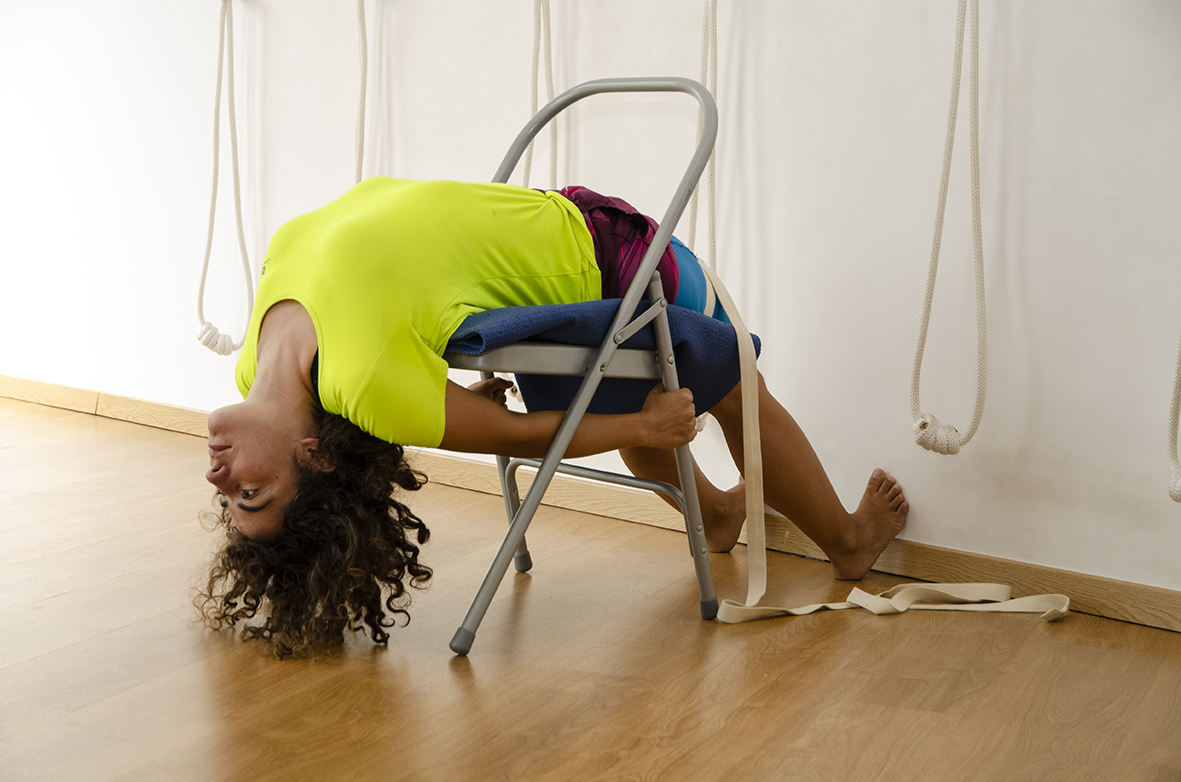
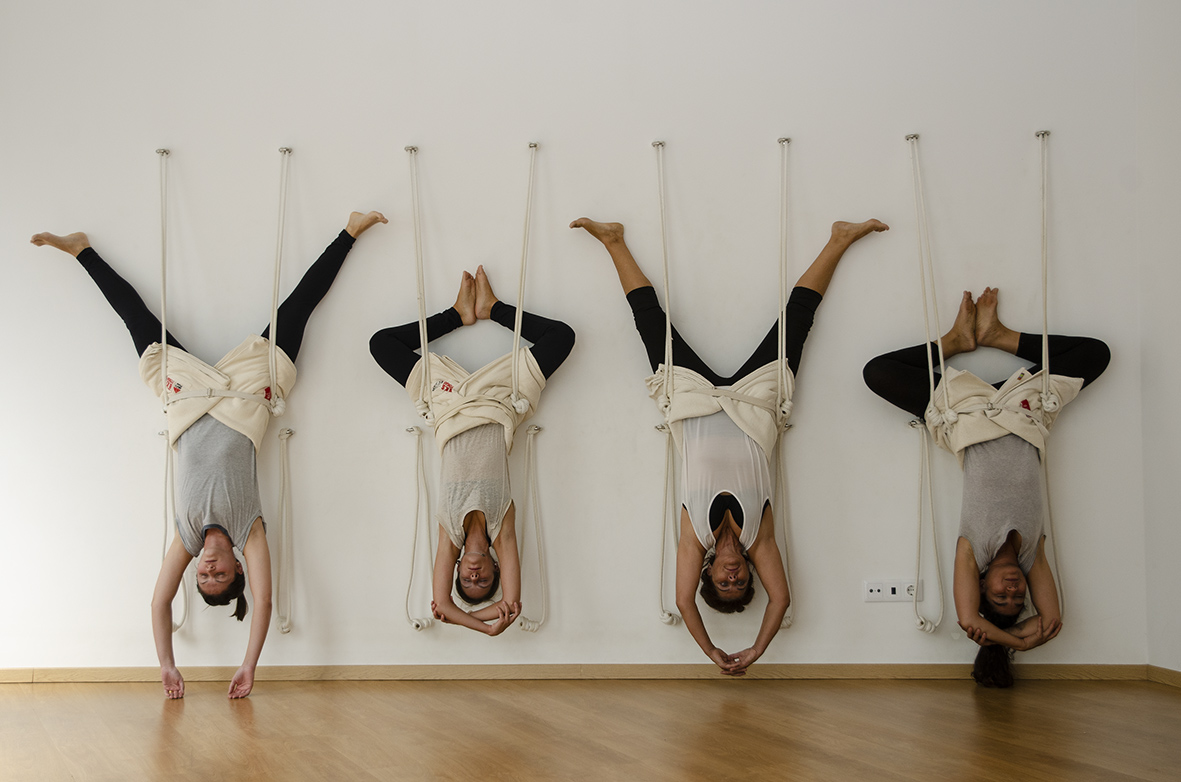
Ropes
In the process of learning the Sirsasana posture many students develop fear. The Master used to have the students making Sirsasana in the center of the room but with his support, grabbing their thighs or placing them in the corners of the walls to support their backs, thus giving a sense of direction and confidence. However, many people also complained of neck aches, breathing became wheezing and the diaphragm contracted. So he started by placing blocks to support the shoulders, but it was not a solution for everyone either. That´s when he put the ropes on the walls and immediately felt the relaxation of the mind and the freedom in the neck. Then he put ropes coming from the ceiling to feel even more freedom in performing the posture.
Weights
The introduction of the weights dates back to the1940s. Everyday, the Master used to made 25 miles from one corner of the city to the other one, to teach. At the end of the day he was tired. To relax, he used to pur 4 rolled mattresses and a bucket full of water over the thighs and sometimes also asked the woman to sit on them.
He also noted that many students could not control leg tremors, also due to anxiety. Then he tied his legs with a piece of cloth and put some weight on them. The tremors stopped and the students experienced deep relaxation.
Thus, the Master concluded that weights help students relax the nervous system.
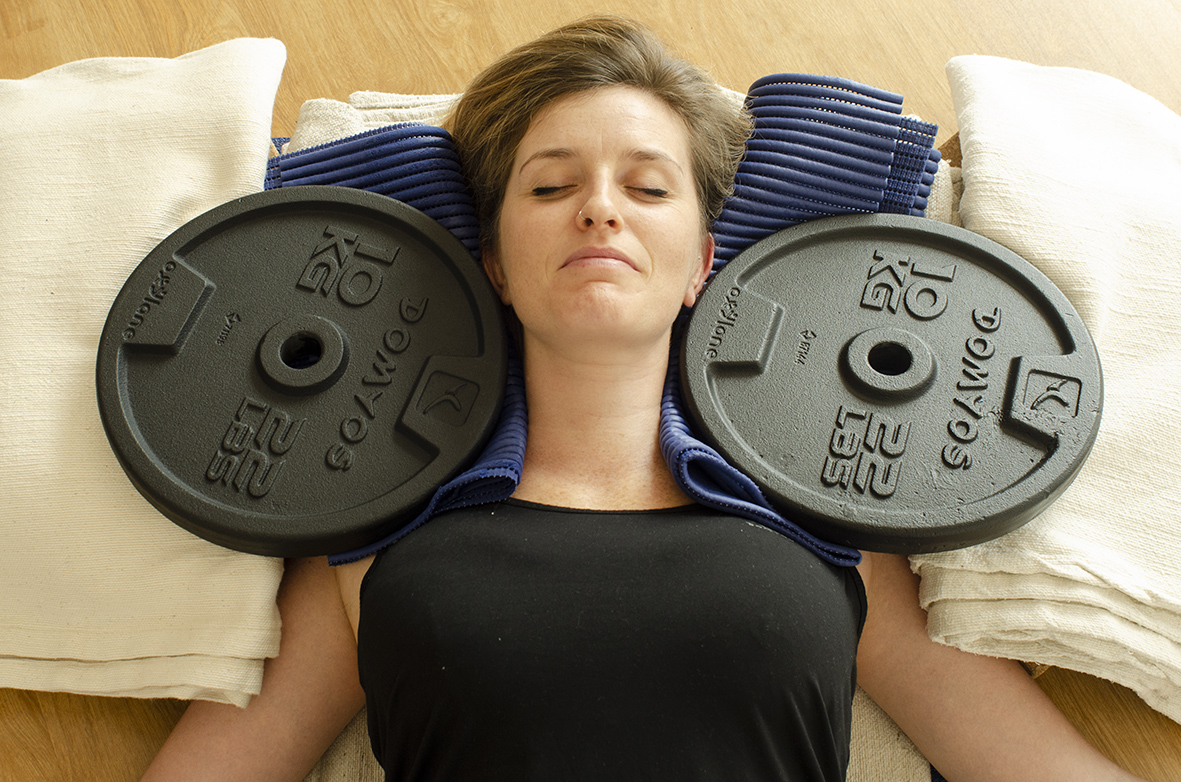
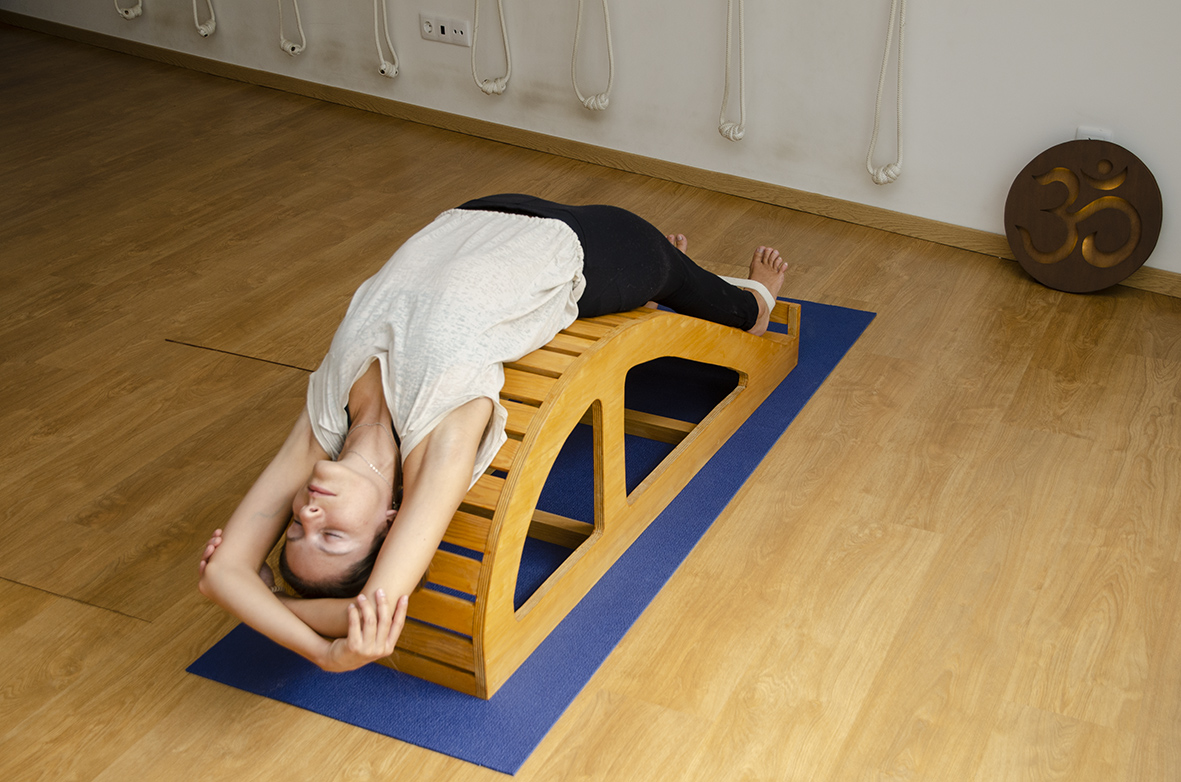
Viparita Dandasana Bench
The Master had many students with spinal problems and asked himself, how could these students do back-bending without injury themselves? He used to lie down on the asphalt cylinders the found on the road. That´s when he decided to make Viparita Dandasana on a drum designed to hold water. However, the drum was made of steel not all students could stand the posture. Then came the idea of doing the pose on circular stools with blankets on them. The students liked it, they felt extension and relaxation at the same time. However, the drum was not designed with the anatomical curvature of the spine and that was how the Master finally designed the seat for Viparita Dandasana.
* Text taken from the photo exhibition at the centenary celebration of the birth of BKS Iyengar, Pune, December, 18.
